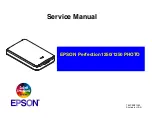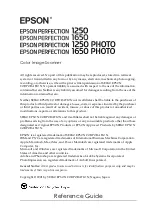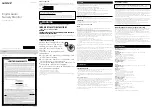
Operation Guide
P341/EN O/B11
Introduction
CHAPTER 1
MiCOM P341
Page 21/22
Note:
*May vary according to relay type/model
The default setting is to select the electrical RS485 connection. If the optional fibre
optic connectors are fitted to the relay, then this setting can be changed to ‘Fibre
optic’.
The next cell down can be used to define the primary function type for this interface,
where this is not explicitly defined for the application by the
IEC 60870-5-103 protocol*.
Function type
226
3.8.4
DNP 3.0 communication
The DNP 3.0 protocol is defined and administered by the DNP User Group.
Information about the user group, DNP 3.0 in general and protocol specifications
can be found on their website:
www.dnp.org
The relay operates as a DNP 3.0 slave and supports subset level 2 of the protocol
plus some of the features from level 3. DNP 3.0 communication is achieved via a
twisted pair connection to the rear port and can be used over a distance of 1000m
with up to 32 slave devices.
To use the rear port with DNP 3.0 communication, the relay’s communication settings
must be configured. To do this use the keypad and LCD user interface. In the relay
menu firstly check that the ‘Comms setting’ cell in the ‘Configuration’ column is set to
‘Visible’, then move to the ‘Communications’ column. Four settings apply to the rear
port using DNP 3.0, which are described below. Move down the ‘Communications’
column from the column heading to the first cell which indicates the communications
protocol:
Protocol
DNP 3.0
The next cell controls the DNP 3.0 address of the relay:
DNP 3.0 address
232
Upto 32 relays can be connected to one DNP 3.0 spur, and therefore it is necessary
for each relay to have a unique address so that messages from the master control
station are accepted by only one relay. DNP 3.0 uses a decimal number between 1
and 65519 for the relay address. It is important that no two relays have the same
DNP 3.0 address. The DNP 3.0 address is then used by the master station to
communicate with the relay.
The next cell down the column controls the baud rate to be used:
Baud rate
9600 bits/s
Summary of Contents for MiCOM P341
Page 1: ...MiCOM P341 Interconnection Protection Relay Operation Guide P341 EN O B11...
Page 2: ......
Page 3: ...Operation Guide MiCOM P341 Interconnection Protection Relay Volume 2...
Page 4: ......
Page 6: ...P341 EN O A11 Operation Guide Issue Control MiCOM P341...
Page 8: ...P341 EN O B11 Operation Guide MiCOM P341...
Page 10: ......
Page 12: ......
Page 17: ...Operation Guide P341 EN O B11 MiCOM P341 CHAPTER 1 Introduction...
Page 18: ...P341 EN O B11 Operation Guide MiCOM P341...
Page 41: ...Operation Guide P341 EN O B11 MiCOM P341 CHAPTER 2 Installation...
Page 42: ...P341 EN O B11 Operation Guide MiCOM P341...
Page 44: ...P341 EN O B11 Operation Guide CHAPTER 2 Installation Page 2 10 MiCOM P341...
Page 53: ...Operation Guide P341 EN O B11 MiCOM P341 CHAPTER 3 Commissioning and Maintenance...
Page 54: ...P341 EN O B11 Operation Guide MiCOM P341...
Page 58: ...P341 EN O B11 Operation Guide CHAPTER 3 Commissioning and Page 4 80 Maintenance MiCOM P341...
Page 135: ...Operation Guide P341 EN O B11 MiCOM P341 CHAPTER 4 Problem Analysis...
Page 136: ...P341 EN O B11 Operation Guide MiCOM P341...
Page 138: ...P341 EN O B11 Operation Guide CHAPTER 4 Problem Analysis Page 2 8 MiCOM P341...
Page 145: ...Operation Guide P341 EN O B11 MiCOM P341 APPENDIX A Relay Menu Database...
Page 273: ...Operation Guide P341 EN O B11 MiCOM P341 APPENDIX B External Connection Diagrams...
Page 274: ...P341 EN O B11 Operation Guide MiCOM P341...
Page 278: ...P341 EN O A11 Operation Guide MiCOM P341...
Page 281: ......
















































